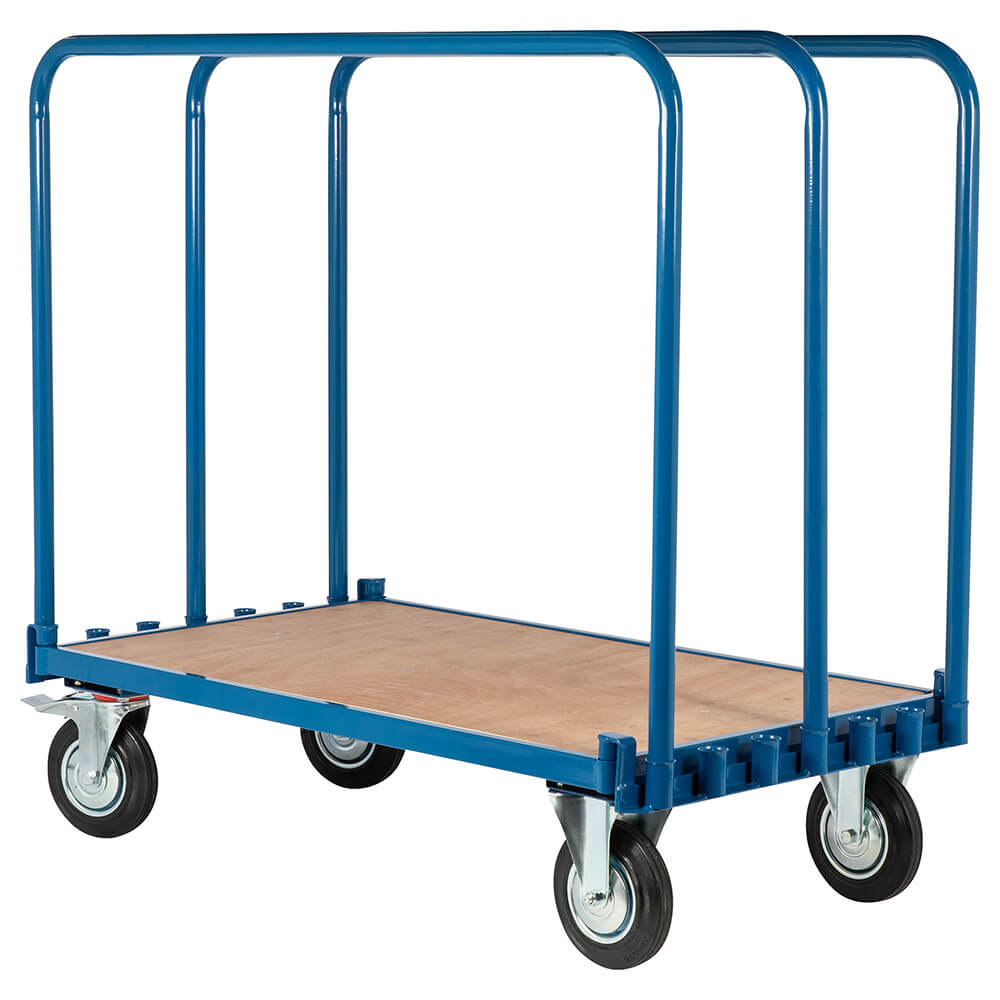In a world where most logistic discussions turn to automation, robotics and predictive analytics, it might be tempting to forget about the humble platform trolley. But this seemingly basic equipment is still a crucial staple in warehouses, retail showrooms, hospitality, health care, production space, and more. Platform trolleys provide the ‘last-few-metres’ solution to the movement of goods from bulk storage to point-of-use, allowing operators to move heavy or ungainly loads safely, easily and with minimum effort. What makes them so valuable is not that they can carry heavy loads, but that they can be repurposed to suit any of the countless tasks they perform.
shifting cartons around a distribution centre at dawn, restocking shelves in a supermarket by noon, ferrying props behind stage at a theatre in the evening. However, this versatility has kept the platform trolley in constant demand for over a century, and modern models draw from this legacy of toughness while adding the best of ergonomics, materials science, and data-driven fleet control.
The development of Platform Trolleys
The early platform trolley was modeled on small horse-drawn cartwagons with the solid wooden platforms and rimmed cast iron wheels. They worked rail depots and factory docks, where concrete flooring — or sometimes packed dirt flooring — imposed little on wheel technology other than durability. The trolley grew and diversified alongside industrial processes into the 20th century. Timber decks were replaced with powder-coated mild steel or aluminium; simple, fixed castors were substituted for swivel castors, allowing omnidirectional travel; and brakes, corner buffers and non-marking tread materials were (and are) included as standard rather than an additional extra. The resurgence of lean manufacturing in the 1980s ushered in renewed engineering emphasis on weight reduction and modularity: lighter frames meant less kilograms for workers to push, and bolt-on accessories allowed a single base unit to accomplish multiple tasks.
Miniaturized electronics and sensors have plummeted in price over the past 10 years, leading to another evolutionary step change. It’s even possible to integrate load cells that alert when weight limits are exceeded, badge readers that limit trolley use to approved staff, or RFID trackers that report utilisation data into warehouse management systems. But for all their complexity, the core mechanical principles – balance, leverage and rolling resistance – are still readily identifiable from their 19th-century forebears.
Core Components and Materials
Three main structural components of the material handling trolley are: the load bed, the frame, and the pull handle. The deck Material must resist deformation while under static and dynamic loads, the most common deck material is galvanized carbon steel, but engineers may also choose stainless or high strength steel or aluminum to reduce the weight of the deck. Polymer decks are the most affordable in terms of the initial cost, however they should be power washed at least once a year if you want to keep them looking clean, and they replace (low quality) wood materials deck more often.
The frame runs the length of the bottom of the deck, shifting the load to the wheels. Square or rectangular steel tubing is still common, only with some companies shooting for super aggressive weight to capacity ratios and specifically calling out cold formed channel sections or laser cut box girders. All structural joints are MIG tack welded and robotically MIG and TIG welded to ensure the highest quality in manufacturing and to eliminate human error. Chassis grips (which may be permanently formed with the chassis or attachable) might also be included for ease in transporting and storage. Ergonomically sized tube diameters (typically between twenty-five and thirty-two millimeters) minimize hand fatigue and accept gloved fingers.
Those with the audacity to view trolleys as ‘strategically crucial’ rather than a mere commodity spend can reap competitive advantages that register in saved minutes, reduced injuries, and improved morale. When your team hits the road to check out high-tech warehouse innovations from equip2go, keep in mind that innovation sometimes comes rolling towards you on four wisely chosen wheels, carrying along in silence all that makes your operation successful.




